SUMMARY
This is AI generated summarization, which may have errors. For context, always refer to the full article.
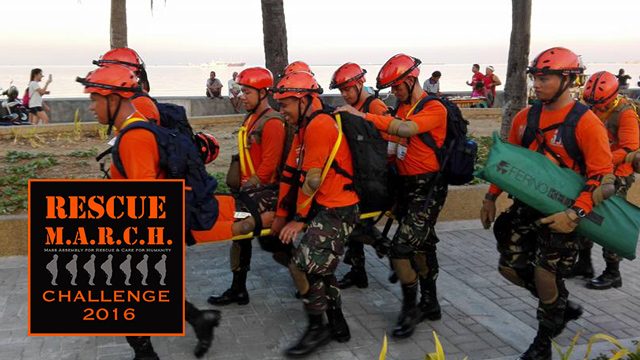
MANILA, Philippines – What happens when the West Valley Fault moves and a 7.2-magnitude earthquake strikes? (READ: What dangers await when the West Valley Fault moves?)
With a total breakdown in public infrastructure, roads will be inaccessible to vehicles, and responders will have to make their way to victims on foot. This is no easy feat, since responders have to be physically fit to be able to carry all the necessary equipment, and travel from a staging area to the affected areas. (READ: All you need to know about preparing for earthquakes)
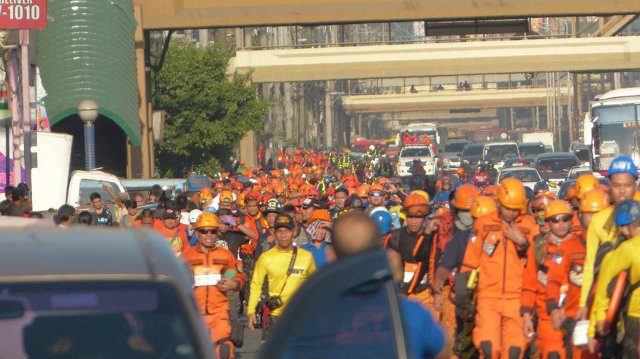
This is the endurance scenario that volunteers and responders regularly train for, culminating in an annual activity, the #RescueMarch Challenge.
Crisis response
This simulation exercise of an emergency response scenario is based on the Metro Manila Earthquake Impact Reduction Study (MMEIRS), which assumes significant loss of life and damage to property in the event of a major earthquake impacting the metropolis.
This Mass Assembly for Rescue and Care for Humanity helps to drive public awareness on the need and importance of a culture of preparedness, as well as for rescuers and disaster advocates to assess their individual and collective abilities to respond to a crisis.
“This is not a competition, rather a collective assessment of the response capability of each rescue unit,” says Martin Aguda, a safety and disaster risk reduction advocate, and one of the convenors of the Rescue March Challenge.
The timing is perfect, as the Rescue March Challenge comes only days after the first quarter National Simultaneous Earthquake Drill (NSED). (READ: #Pagyanig: NDRRMC holds nationwide simultaneous earthquake drill)
Endurance training
2016 marks the third Rescue March Challenge. The first Rescue March started at the Bonifacio Global City and ended at the Quezon Memorial Circle, while the second Rescue March started from Quezon Circle and traveled to Manila City Hall, the simulated ground zero for 2015.
Some 700 participants from volunteer organizations, the uniformed services, and government disaster management offices, were organized in 7-person teams.
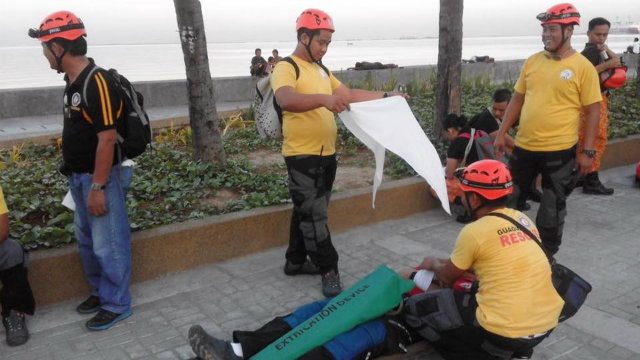
Among the organizations represented were the Metro Manila local government units, the Metro Manila Development Authority, the Philippine National Police, the Bureau of Fire Protection, the Army, Navy, and Air Force, Central Minor Basilica Fire and Rescue, Ride Guardians Emergency Network, as well as the National Service Reserve Corps unit and military reservists of the University of Perpetual Help system. For the first time, representatives from the provinces of Aurora, Pampanga, and Bulacan participated.
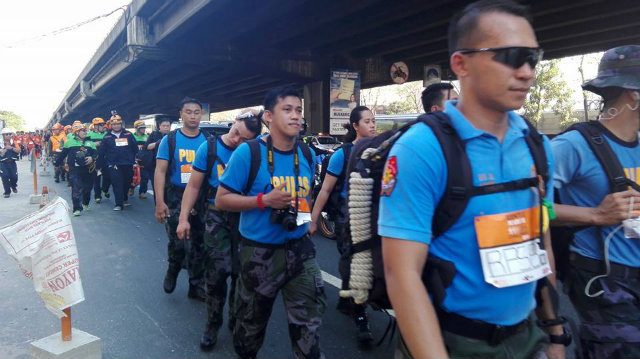
Carrying their personal protective gear, provisions and emergency equipment, they walked from the Bonifacio Shrine near Manila City Hall, through Roxas Boulevard, the CCP complex, and EDSA, passing by Villamor Golf Course, one of the planned evacuation areas, before reaching Fort Bonifacio.
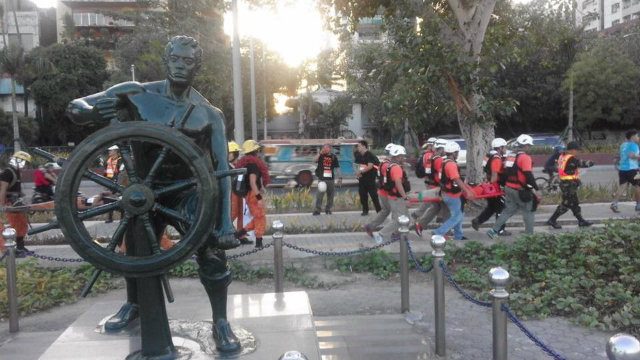
The Mogadishu walk, an exercise where teams carry an injured individual via a spineboard, was performed along Roxas Boulevard, from the US Embassy until the Manila Yacht Club.
This year’s exercise closes the scenario loop, with Manila as the staging area, and the Army grandstand at Fort Bonifacio as the endpoint. By organizing responders into their respective quadrants, the Rescue March also incorporated elements of Oplan Metro Yakal Plus, the government’s contingency plan. (READ: Metro Yakal: Metro Manila’s earthquake response plan)
A safer and more resilient nation
Undersecretary Alexander Pama, Executive Director of the National Disaster Risk Reduction and Management Council and Administrator of the Office of Civil Defense, lauded the Rescue March Challenge for helping promote not just camaraderie among disaster advocates and volunteers, but for also setting the stage for communication among organizations.
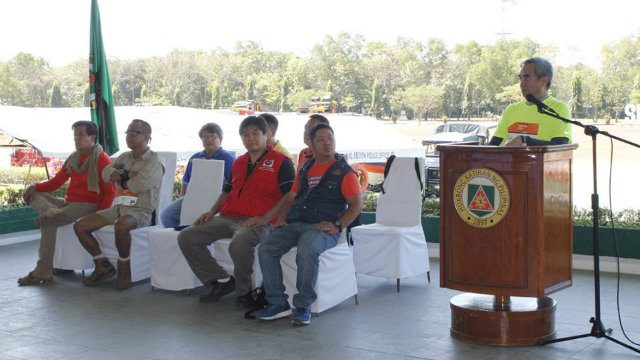
“Pagdating ng oras, ang mga responders…naka-organize na sila. Yung coordination mas mabilis,” said Pama, who always echoes, “It is only a disaster if we are not prepared.” (When the time comes, the responders are already organized. Coordination is faster.) – Rappler.com
Do you want to learn how to be an information advocate and Agos volunteer in times of crisis or disaster? Email move.ph@rappler.com for more details!
Add a comment
How does this make you feel?
There are no comments yet. Add your comment to start the conversation.